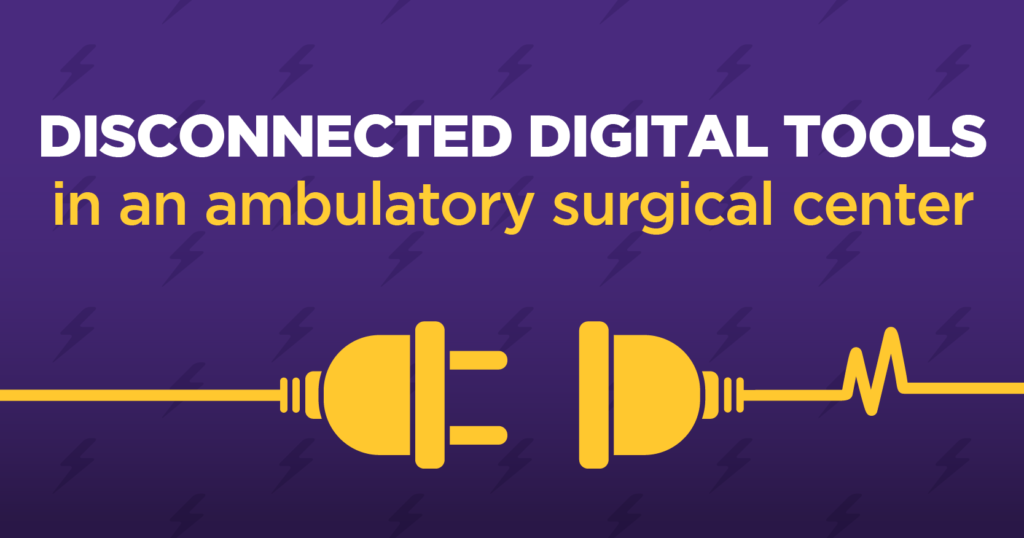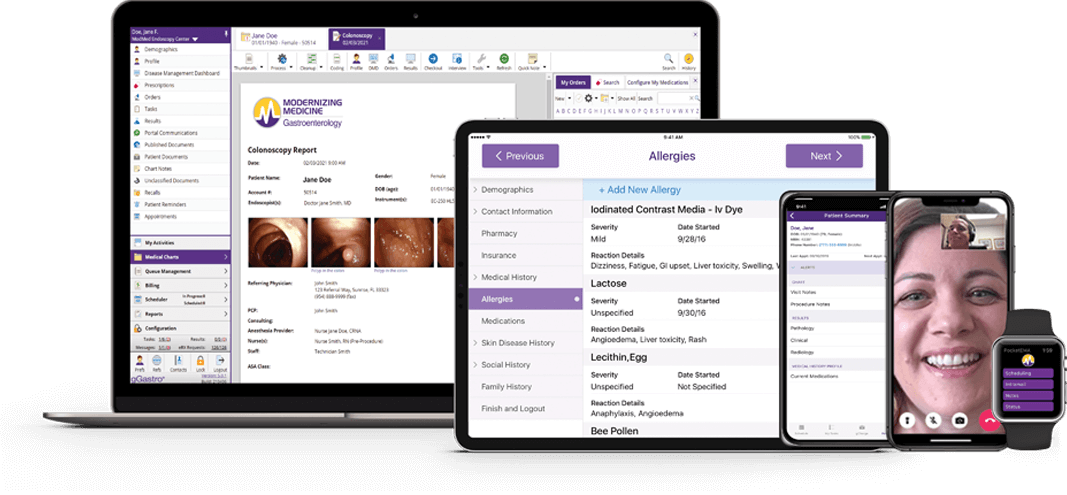Disconnection in GI ASCs and How to Fix It

Ambulatory Surgery Centers (ASCs) face unique challenges in their daily operations. Commonly in gastroenterology ASCs, separate software programs exist for almost every business function an ASC needs to perform. While these programs might be suitable for their individual functions, they ultimately create more problems than they solve.
With higher patient volume expected over the next few years due to CMS approving more procedures for outpatient settings, it’s critical to solve disconnection problems now. Otherwise, your ASC might have a tough time absorbing a higher influx of patients seeking care.
Here are some of the daily disconnection challenges ASCs encounter and how to fix them:
Challenge #1: Learning Multiple Systems
Adopting new technology is a must to keep up with changes in the healthcare industry, but how can you do that efficiently when there’s a separate computer program to learn for each task you need to complete?
It’s not uncommon for ASCs to have separate RCM/billing software, practice management and scheduling software, and several versions of electronic records depending on physician preference. There might be additional software to learn for nursing and anesthesia notes too, since many EHR systems built for an office setting aren’t equipped to handle those nuances.
Solution #1: Unified System
Using a single, unified system for functions across the practice results in everyone working on the same page. Updates to a patient’s chart, billing information and schedules are accessible to all staff quickly and efficiently. Learning a single program results in less time training and onboarding, getting new employees up to speed faster and making sure you’re more focused on your primary responsibilities instead of where to click next.

Challenge #2: Broken Integrations
Each piece of your software should be able to interact with each other in your ASC. As it turns out, it can be a challenge to get the integrations you want. You can’t tell if your vendors aren’t willing to help, or if they were pulling your leg about what the software could really do in the first place. Either way, there’s nothing integrated about being on hold for 30+ minutes.
Solution #2: Single Point of Contact
Bidirectional integration with a practice management system helps ease scheduling burden across multiple departments, including surgery and anesthesia. Booking procedures more efficiently helps save on resources and manpower, allowing staff to refocus on inventory management, reporting and other aspects of running a successful ASC.
It’s much easier to integrate programs when a single vendor owns and operates them. The vendor can discuss integration improvements or issues internally, resulting in a faster resolution and taking the burden for fixing the problem off of you. It’s also a good idea to research the customer service history of a vendor to ensure it has a proven track record of responsive customer support.
When your software systems are disconnected, data re-entry becomes the norm. But how much time are you spending duplicating your work that you could be spending to achieve higher-level goals instead?
Challenge #3: Data Re-entry
Re-entering insurance information from practice management to your billing software. Re-entering credit card numbers from practice management for payment processing. Re-entering CPT codes from your EHR to your billing software for claims processing. That’s a lot of wasted time entering duplicate information, just to get a single patient in and out of the center.
When your software systems are disconnected, data re-entry becomes the norm. But how much time are you spending duplicating your work that you could be spending to achieve higher-level goals instead?
Solution #3: Greater Connectivity
Integrations that pull information quickly and accurately between systems in near-real time cut down tremendously on data re-entry. Even better is when these integrations are created and managed by a single company with experience meeting the needs of an ASC.
A company with a track record of supporting ASCs knows that each center’s needs for data exchange are unique. Streamlining the scheduling process, near-real time updates and alerts, and inventory management are critical components for ASC success.

Challenge #4: Disparate Reports
In light of hospitals targeting ASCs for purchase, having a firm grasp on overall performance will become crucial to maintain independent operations. Unfortunately, disconnected software within an ASC doesn’t provide a clear picture. Different programs might have different data and analytics capabilities, shown in different ways. Some programs might not include analytics at all.
ASCs often try to solve this problem by implementing yet another third-party program to pull in data points from every other program and synthesize and crunch that data into an easier-to-understand format. However, this solution adds to the first problem of learning multiple systems.
Solution: Built-In Analytics
How data is presented makes all the difference in terms of its interpretation. When data is presented in a visually consumable format, you can understand it quickly and take action confidently to keep operations running smoothly and make decisions about the financial well-being of your center.
ModMed® aims to provide solutions for each gastroenterology ASC’s unique needs.